University of Redlands Emergency Alert System
Alert Received: . For more information, visit: https://www.redlands.edu/alert/
University of Redlands
"The true power of GIS is not in the technology itself, but in its ability to bring people together. A geographic approach helps build a comprehensive understanding of complex issues. This knowledge unites us as we work across boundaries to improve the well-being of our planet." - Esri
July 15-19, 2024
San Diego Convention Center
Esri User Conference Student Assistants:
Congratulations to the following University of Redlands students and recent alumni who were selected to be Student Assistants at this year’s User Conference. Look for them at the Convention Center!
Callum Davis ’24, Business
Celine Rafie ’24, Environmental Sciences
Jesus Vasquez ’24, Environmental Business
Jocelyn Torres ’25, Johnston
Maryjane Guadalajara ’24, Math
Sonia Prabhakara Reddy, Master of Science in Business Analytics
To attend the conference events, you must be registered. Download the registration instructions.
Faculty and Staff: Register for the in-person/virtual UC and/or the Education Summit.
Note that full complimentary passes for the in-person UC and Education Summit events are limited to faculty and staff.
Note the event FAQs.
1:00 p.m. – 2:00 p.m. |"GIS and Location Analytics in Business Education: A Value Chain Approach"
Marriott Marquis San Diego Marina, Grand Ballroom Salon 1
Thomas Horan, Dean, School of Business & Society, University of Redlands,
James Pick, Professor and Director, Center for Spatial Business (CSB), University of Redlands
Avijit Sarkar, Academic Director, Institute for Geospatial Impact; Professor, School of Business and Society, University or Redlands
3:30 p.m. – 5:00 p.m. | Academic GIS Fair | Booths A105 and A106
San Diego Convention Center, Sails Pavilion, Third Level – Ballroom 20 Lobby
4 p.m. – 6:30 p.m.| Map Gallery Reception
San Diego Convention Center, Sails Pavilion – See below for Map Gallery entries
5:00 p.m. – 6:30 p.m. | "A GIS Approach to Facility Management in Education"
San Diego Convention Center, Balloom 20 D
Yvonne Morales '24
5:00 p.m. – 6:30 p.m. | "A People's History of the I.E.: Using ArcGIS Online to Tell a Historic Story"
San Diego Convention Center, Balloom 20 D
Ashley Roman '24
8 a.m. – 6 p.m. | Map Gallery
San Diego Convention Center, Sails Pavilion
9 a.m. – 6 p.m. | Expo Booth # 2328
San Diego Convention Center Exhibit Hall
8 a.m. – 6 p.m. | Map Gallery
San Diego Convention Center, Sails Pavilion
9 a.m. – 6 p.m. | Expo Booth # 2328
San Diego Convention Center Exhibit Hall
11:30 - 12:30 | University of Redlands MSGIS & MGIS Lunch & Program Update
San Diego Convention Center 24 ABC
6 p.m. – 8 p.m. | University of Redlands Reception - Alumni & Friends
Roy’s San Diego Waterfront
Marriott Marquis, 333 West Harbor Drive, San Diego
Pick up an invitation for this exclusive event at our Expo Booth #2328
Registration required
8 a.m. – 1:30 p.m. | Map Gallery
San Diego Convention Center, Sails Pavilion
9 a.m. – 4 p.m. | Expo Booth # 2328
San Diego Convention Center Exhibit Hall
Going to the Sun via Thomas Vint's Approach: A case study in design with nature
Dr. Steven Moore
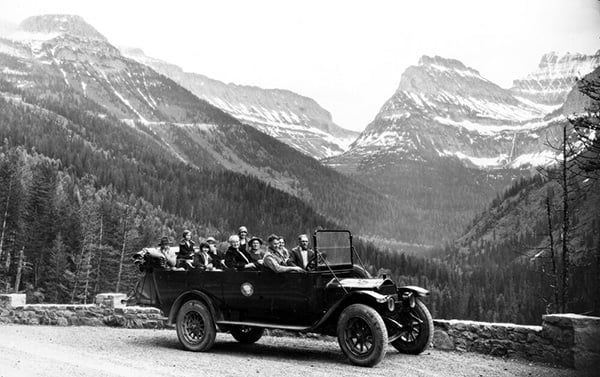 In August, 1924, a party of National Park Service officials on horseback in Glacier National Park had an argument about a road alignment that changed the course of how human improvements would be made in all of the nation's parks.
In August, 1924, a party of National Park Service officials on horseback in Glacier National Park had an argument about a road alignment that changed the course of how human improvements would be made in all of the nation's parks.
Group of tourists in a Glacier Park Transport Company tour bus on the west side of the Going-to-the-Sun Road. Hileman, T. J. (Tomar Jacob), 1882-1945. https://www.mtmemory.org/nodes/view/113106
Digital Inclusion in India: A Geospatial and Multivariate Perspective
Priyanka Somai, Avijit Sarkar, James B. Pick (Panel B-13-07)
India has witnessed a rapid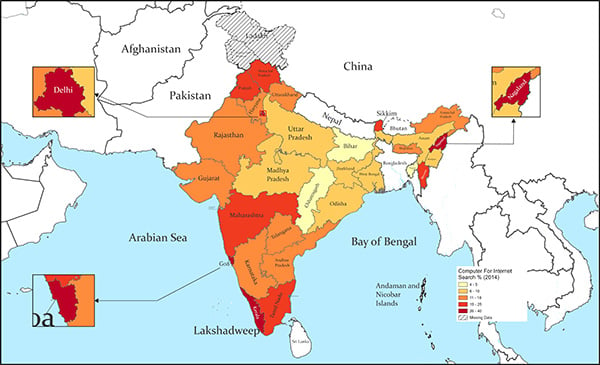 increase in internet penetration, fueled by affordable smartphones, cheaper data plans, and government initiatives such as Digital India. However, India’s digital divide persists, with urban areas having higher internet penetration compared to rural areas.
increase in internet penetration, fueled by affordable smartphones, cheaper data plans, and government initiatives such as Digital India. However, India’s digital divide persists, with urban areas having higher internet penetration compared to rural areas.
Are Mortgage Companies Unfair to Minorities?
Jennings, Michelle & Susanne Ma (Panel B-13-08)
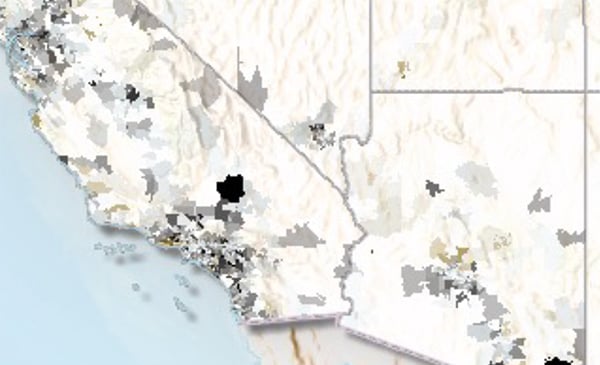 The project’s objective was to identify factors that might contribute to inequities in mortgage lending practices. Our findings show that minorities were disadvantaged in mortgage finance due to disproportionate complaint rates in regions with higher proportions of minorities. These findings have societal, legal, ethical, and business implications which warrant further research and analysis. The Consumer Financial Protection Bureau’s (CFPB’s) role to safeguard and protect consumers and regulate banks, financial institutions, and payday lending industry remains vital, in light of recent legal challenges.
The project’s objective was to identify factors that might contribute to inequities in mortgage lending practices. Our findings show that minorities were disadvantaged in mortgage finance due to disproportionate complaint rates in regions with higher proportions of minorities. These findings have societal, legal, ethical, and business implications which warrant further research and analysis. The Consumer Financial Protection Bureau’s (CFPB’s) role to safeguard and protect consumers and regulate banks, financial institutions, and payday lending industry remains vital, in light of recent legal challenges.
Tracking the Pathways of Ocean Plastic to our Beaches
Shyam Soundararajan (Panel B-13-05)
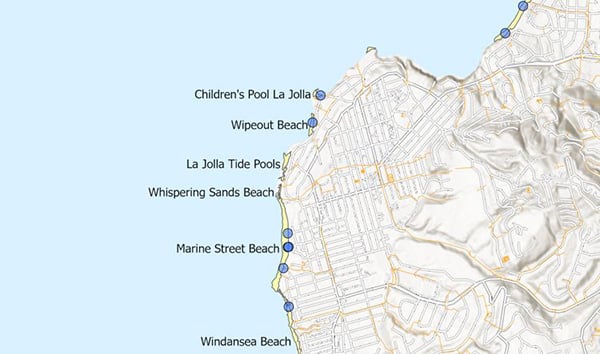 Approximately 75% of plastic found in the ocean comes through beaches. This project focuses on the beaches in San Diego County. If plastic continues to reach the oceans from those beaches, it will degrade the marine environment as well as overall human health. To mitigate this problem, this project worked with OpenOceans Global to trace the source of beach plastic, aiming to reduce the amount of ocean plastic on San Diego County beaches.
Approximately 75% of plastic found in the ocean comes through beaches. This project focuses on the beaches in San Diego County. If plastic continues to reach the oceans from those beaches, it will degrade the marine environment as well as overall human health. To mitigate this problem, this project worked with OpenOceans Global to trace the source of beach plastic, aiming to reduce the amount of ocean plastic on San Diego County beaches.
Counting Cork
Grace Beaty (Panel B-13-04)
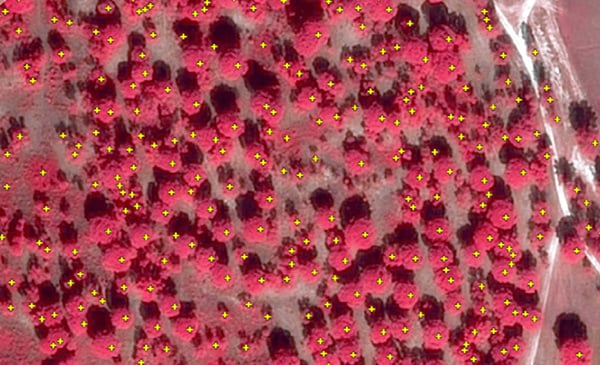 Cork is more than a wine stopper; it has uses in aerospace insulation, building materials, in the core of MLB baseballs, and more. Mediterranean cork forests act as a carbon sink for 14 million tons of CO annually equivalent to 2.7 million homes’ yearly electricity use. After harvest, cork products retain their sequestered carbon, and the tree is able to restart the process.
Cork is more than a wine stopper; it has uses in aerospace insulation, building materials, in the core of MLB baseballs, and more. Mediterranean cork forests act as a carbon sink for 14 million tons of CO annually equivalent to 2.7 million homes’ yearly electricity use. After harvest, cork products retain their sequestered carbon, and the tree is able to restart the process.
A People's History of the I.E.
Ashley Román (Panel B-13-02)
T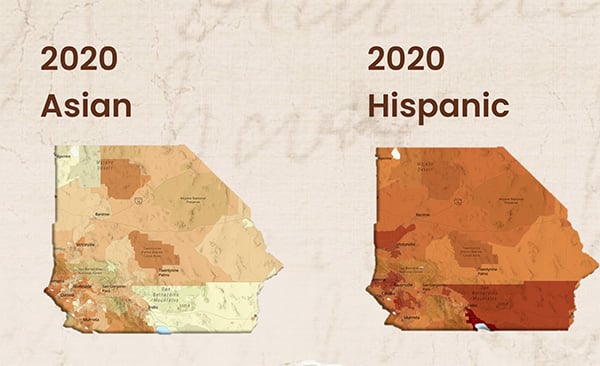 hrough the power of GIS, we are able to tell a historic story of people's lives by straying away from numbers and percents and allow users to see trends visually over time. This brings awareness to racial and social inequalities that were also prevalent in previous time periods. Awareness and storytelling are the driving forces behind this project. The data represents race and ethnicity data from 1900 to 2020 encompassing the Inland Empire region of Southern California. The end goal is to create a creative and interactive way for users to view the valuable historic data to give credit to the lives and struggles of the people before us.
hrough the power of GIS, we are able to tell a historic story of people's lives by straying away from numbers and percents and allow users to see trends visually over time. This brings awareness to racial and social inequalities that were also prevalent in previous time periods. Awareness and storytelling are the driving forces behind this project. The data represents race and ethnicity data from 1900 to 2020 encompassing the Inland Empire region of Southern California. The end goal is to create a creative and interactive way for users to view the valuable historic data to give credit to the lives and struggles of the people before us.